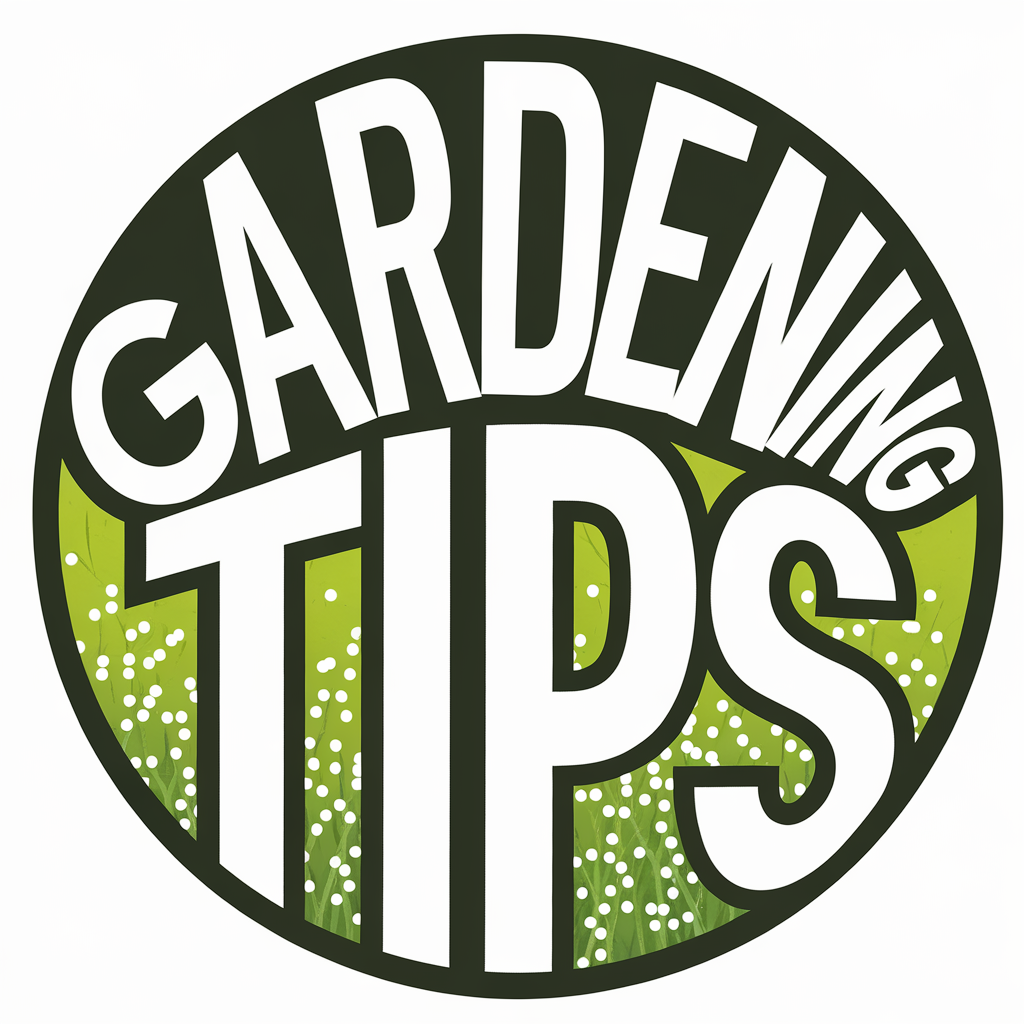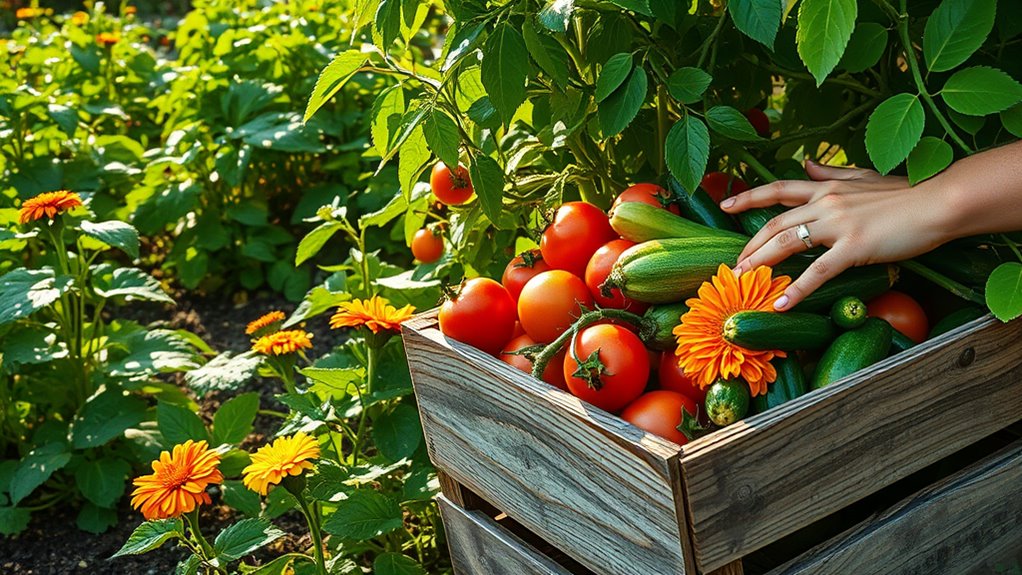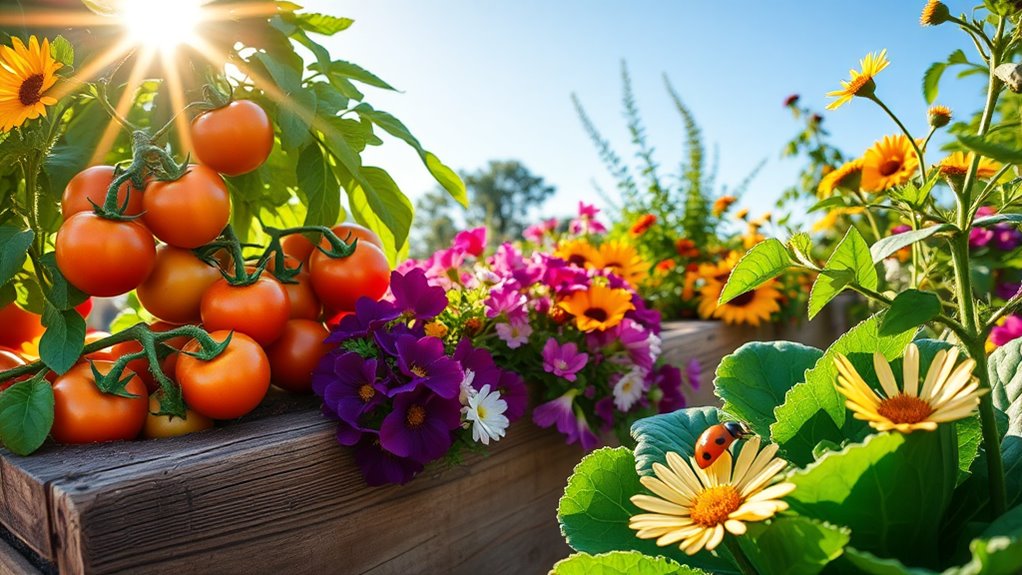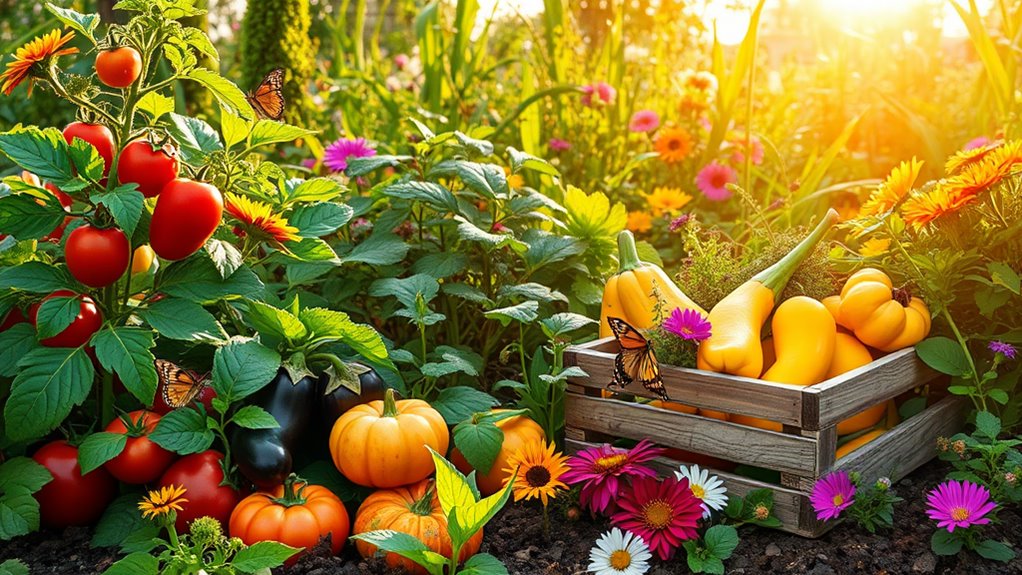What I Learned From My First Year of Organic Gardening
In your first year of organic gardening, you’ll quickly learn the critical roles of soil health and composting. Nourishing your soil with organic matter boosts beneficial microorganisms that enrich plant growth. Choosing the right plants, based on your region and companion planting, enhances garden vigor while discouraging pests naturally. Plus, adopting seasonal watering techniques keeps your plants thriving. Embracing biodiversity fosters resilience. There’s so much more to discover about creating a sustainable ecosystem.
Understanding Soil Health
How can you cultivate a thriving garden if your soil isn’t healthy? In organic gardening, soil health is paramount.
Start by testing your soil to understand its pH and nutrient levels. You’ll want to enrich it with organic matter, like compost or aged manure, which nourishes beneficial microorganisms.
These tiny allies break down nutrients, making them accessible for your plants. Don’t forget to practice crop rotation and cover cropping; they prevent nutrient depletion and enhance soil structure. Additionally, soil testing is essential to identify nutrient deficiencies and tailor your amendments accordingly.
Choosing the Right Plants
Choosing the right plants is essential for a thriving organic garden, and it starts with understanding your climate.
By considering companion planting, you can enhance growth and deter pests naturally. Certain plant combinations can significantly enhance growth and create a more resilient garden environment.
Plus, deciding between seeds or seedlings can set the stage for your garden’s success, so let’s explore these essential factors together!
Climate Considerations
Have you ever wondered which plants thrive best in your unique climate?
Understanding your local conditions is key to a flourishing garden.
Here’s how to choose wisely:
- Temperature: Select plants suited to your region’s average temperatures.
- Sunlight: Assess how many hours of sunlight your garden receives daily.
- Soil Type: Test your soil for drainage and nutrient content; some plants prefer sandy soil, others clay.
- Water Availability: Consider rainfall patterns and choose drought-resistant varieties if necessary.
Companion Planting Benefits
What if you could boost your garden’s productivity and health simply by pairing the right plants together?
Companion planting is a sustainable strategy that enhances growth, deters pests, and improves pollination.
For instance, planting basil near tomatoes not only enhances flavor but also keeps harmful insects at bay.
Likewise, marigolds can deter nematodes, protecting nearby vegetables.
By understanding plant relationships, you’ll create a thriving ecosystem in your garden.
Choose companions wisely, and you’ll witness the magic of nature working in harmony.
Embrace this practice, and soon, your garden will flourish like never before, yielding bountiful harvests and vibrant life.
Seed vs. Seedling Choices
When deciding between seeds and seedlings, which option aligns best with your gardening goals?
Both choices have their merits, but understanding your needs can lead to a flourishing garden.
Here’s what to think about:
- Time: Seeds require patience, while seedlings offer immediate growth.
- Cost: Seeds are typically cheaper, but seedlings save you time.
- Variety: Seeds provide a wider selection, especially heirlooms.
- Success Rate: Seedlings often have a higher survival rate in challenging conditions.
Whichever you choose, remember that nurturing your plants with organic practices guarantees a sustainable and vibrant garden!
Effective Pest Management
How can you maintain a thriving garden while keeping pests at bay? Start by embracing natural solutions. Companion planting, introducing beneficial insects, and using organic sprays can make a huge difference. Here’s a quick reference table to help you:
| Pest | Management Strategy |
|---|---|
| Aphids | Ladybugs, neem oil |
| Spider Mites | Insecticidal soap, water |
| Slugs | Beer traps, copper barriers |
| Whiteflies | Sticky traps, garlic spray |
With these methods, you’ll not only protect your plants but also support a balanced ecosystem in your garden. Additionally, effective natural pest sprays made from organic ingredients can further enhance your pest management strategy. Happy gardening!
The Importance of Composting
Maintaining a healthy garden goes beyond pest management; it also involves nurturing the soil that supports your plants.
Composting is a game-changer in organic gardening, providing essential nutrients while promoting sustainability. Here’s why you should embrace composting:
- Nutrient-Rich: Compost adds essential nutrients to your soil, enhancing plant growth.
- Soil Structure: It improves soil aeration and water retention.
- Waste Reduction: Composting diverts kitchen scraps and yard waste from landfills.
- Microbial Activity: It boosts beneficial microorganisms, creating a thriving ecosystem.
Additionally, using kitchen scraps as compost ingredients can further enrich your soil and reduce waste.
Watering Techniques for Success
Timing your watering is essential to keep your plants thriving, and knowing when to water can make all the difference. By monitoring soil moisture, you can guarantee your garden gets just the right amount of hydration without waste. Let’s explore some efficient irrigation methods that will help you cultivate a flourishing, sustainable garden. Implementing efficient watering techniques can significantly enhance your plants’ health and growth.
Timing Your Watering
When’s the best time to give your garden a drink?
Timing matters for healthy plants!
Watering at the right time can help conserve resources and promote growth.
Here’s when to do it:
- Early morning – Plants absorb water better before the heat of the day.
- Late afternoon – A good option if you miss the morning window; avoid evening to reduce disease risk.
- After rain – Check soil moisture before adding more water; excess can harm plants.
- Seasonally – Adjust your schedule for different plant needs throughout the year.
Proper timing leads to thriving, resilient gardens!
Soil Moisture Monitoring
Understanding the moisture levels in your soil is essential for nurturing a healthy garden.
Regularly check the soil’s moisture by sticking your finger about an inch deep; if it feels dry, it’s time to water. You can also use a moisture meter for more precise readings.
Pay attention to your plants’ signals; drooping leaves often indicate thirst. Remember, overwatering can be just as harmful as underwatering.
Aim for consistent moisture, allowing the top layer to dry slightly between waterings. By monitoring soil moisture diligently, you’ll create a thriving environment for your plants, ensuring they grow strong and vibrant throughout the season.
Efficient Irrigation Methods
How can you guarantee your garden receives the right amount of water without wasting precious resources?
Efficient irrigation methods are key to nurturing your plants sustainably.
Here are four techniques to evaluate:
- Drip Irrigation: Directly delivers water to plant roots, minimizing evaporation.
- Soaker Hoses: Lay them on the soil surface to slowly release moisture.
- Rainwater Harvesting: Collect rainwater in barrels to use during dry spells.
- Mulching: Retains soil moisture and reduces evaporation while enriching your garden.
Embracing Biodiversity
Biodiversity is the heartbeat of a thriving organic garden, where every plant, insect, and microorganism plays an essential role in creating a balanced ecosystem.
By planting a variety of species, you attract beneficial insects that help control pests naturally.
Mix flowers with vegetables to encourage pollinators, enhancing your garden’s productivity.
Don’t underestimate the power of soil microbes; they’re essential for nutrient cycling and plant health.
Incorporating companion planting strategies can further enhance your garden’s resilience and productivity.
Embracing biodiversity not only fosters resilience against diseases but also boosts your garden’s overall vitality.
Celebrate the interconnections in nature, and watch your garden flourish with life while you cultivate a sustainable environment.
Seasonal Planning and Crop Rotation
Successful organic gardening hinges on careful seasonal planning and effective crop rotation.
By understanding when to plant and rotate your crops, you can enhance soil health and maximize yields. Implementing essential seasonal strategies can further help maintain a vibrant garden throughout the year.
Here are four essential tips:
-
Plan your planting schedule: Know the best planting times for each crop based on your zone.
-
Rotate crops: Avoid planting the same family of plants in the same spot annually to reduce pests and diseases.
-
Use cover crops: Improve soil fertility during off-seasons.
-
Monitor seasonal changes: Adapt your strategies based on weather patterns and soil conditions.
Embrace these practices for a thriving organic garden!





